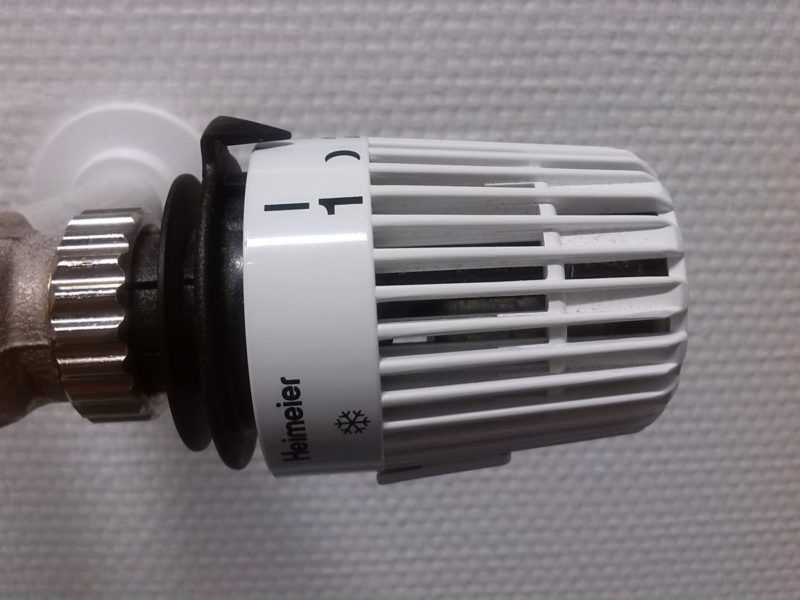Are you wondering what is a heat trap on a water heater? Don’t worry, and you are in the right place to discover everything on it. A heat trap seems to be a component used to minimize heat loss at a water heater’s input and exit.
The traditional tides of water are taken good care of using heat traps. Whenever the water in the heater heats up, the ice water cools it down, leading to electricity and heat loss. That issue is fixed by using a heat trap.
Thermosiphon is the best method for achieving convective heat transfer. It was a passive activity that didn’t need any external factor and happened even if there were no more heat traps. Heat traps stop convective heat transfer from happening. By avoiding mingling with the chilly water in the tank, the heat in the system keeps its warmth. Keep reading to learn more about it.
The Working Principle Of Heat Trap
So, what is a heat trap on a water heater? Thermodynamic convection is used in conventional heat trap rings (also known as goosenecks). The temperature of hot water would increase, while the temperature of ice water would fall. When hot water becomes trapped at the top of the loop when a U-shaped dip is added to the pipeline, the cold water may travel through and into the tank. Even though the design of nipples differs slightly, the functioning remains the same.
Two little connections are fitted when the pipelines enter or leave the tank. The hot water exit fitting has a Teflon ball, whereas the chilled water input connection has a polyethylene puck. These spheres sit in front of the faucets while the water heater is in standby mode (i.e., you aren’t drawing water) and stop heat from escaping (convection).
Whenever you switch on a faucet, the spheres are raised out of their seats to enable unrestricted circulation, and they return to their original positions once you turn the water off. If you use heat trap loops or even a heat trap nipple, you may save up to 70% on wasted energy. Whenever the invoices come through, it adds up fast. Furthermore, heat traps are already required by many state and city legislation.
Installation Process Of Heat Trap On A Water Heater
Installing a heat trap seems to be a simple task that shouldn’t take long. Get a nipple kit immediately. These nipple components may be purchased online or at traditional local shops. Using a non-contact electrical detector, double-check if you have switched off the power. It is necessary for the protection of the public. Shut off the gas line if you’re using a gas-fueled heater. Your water heater’s water supply must also be turned off.
A bucket or another vessel can be used. Keep in mind that you’ve been working with heated water, so proceed with caution. Turning on the taps will also eliminate warm water from water lines. Remove this pipeline from the heating water as well as the intake supply. These heat traps were color-coded to make it easier to determine which one is appropriate for which channels.
A heat trap for chilly water intake will be blue, and the heat trap for heated water will be red. It is better to link them inside the order in which they were coded. This system will be ineffective if this does not happen. Also, reconnect all nuts in almost the same order as they were disconnected. Replace the taps in your home and switch on the waterways. When restoring the water heater’s power source, look for leakage. Just after a hookup, your heat traps will work properly. The complete setup may require just under an hour, mainly if all the appropriate tools are on hand.
Some Common Issues With Heat Trap
Heat traps are not immune to issues. Clunking sound, thermal expansion, circulation constraints, and power losses are the most prevalent problems we encounter. Poor placement or a defective trap are the most common causes. Whenever the heat traps fail, thermosyphons happen. Even chilly water may flow hot and warm, making it easier to recognize. If the heat traps fail, heating might leak into the cool pipelines. Start feeling the inlet valve if you suspect this is what’s going on. If one or more heat traps are warm to the touch, then know something’s wrong.
Using ball heat traps, circulation limitation is a possibility, and its ball becomes trapped within the heat trap as a result of this. The ball stops moving when you activate the heated water tap, and the supply is slowed. A shoddy trap installation is frequently to blame for this issue. The ball once again is at blame for this issue. When using boiled water, the pressured water will flow an all-around ball within the heat trap. The ball bounces spontaneously, making a rattling sound if you have a recirculating system that generates tremendous pressure. You may also want to read about how to make a car heater warm up faster.
It’s A Wrap!
We are happy to know that you have learned what is a heat trap on a water heater. Several individuals are concerned about putting the heat trap upon their water heater. Nevertheless, you must not fear to activate the part because of the benefits it offers. By preventing energy loss, it can save you more than 70% on home power bills. Click on these links to read related articles; know how does a car heaters work and why is my car heater blowing cold air. Thank you, friends, for reading this article till the end.

